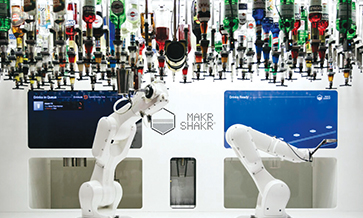Researchers at Heriot-Watt University, Edinburgh, have used waste water from the whiskey distilling industry to produce green hydrogen, which is a sustainable fuel. Using a newly developed nano-scale material called nickel selenide, which is about one-10,000th the diameter of a human hair, the team replaced fresh water with distillery waste water in the green hydrogen production process.
Hydrogen is a gas that, unlike fossil fuels, does not emit carbon when it is burned. Green hydrogen is generated using renewable energy. The electricity generated from renewable sources – such as wind or solar – is used to power electrolysis. This is the process which produces hydrogen by splitting water into hydrogen and oxygen.
Globally, the distilling sector is thought to produce approximately one billion litres of waste water annually. Dr. Sudhagar Pitchaimuthu, Materials Scientist at Heriot-Watt’s School of Engineering and Physical Sciences, explains that it takes 9 kg of water to produce every 1 kg of green hydrogen. Meanwhile, every one litre of malt whisky production creates about 10 litres of residue.
“To help protect the planet, we need to reduce our use of fresh water and other natural resources. So our research focused on how to use this distillery wastewater for green hydrogen production with a simple process that removes waste materials present in the water.”
“About one billion litres of waste water a year is produced from the distilling industry, so the potential of this process is huge,” Sudhagar added. Here, using industry waste water refers to reducing the extensive fresh water footprint associated with green hydrogen production.
The research team plans to develop its own electrolyser prototype and scale nickel selenide nano-particles’ production, which will also analyse distillery waste water to discover if other materials of value could be saved from it, along with hydrogen and oxygen.














